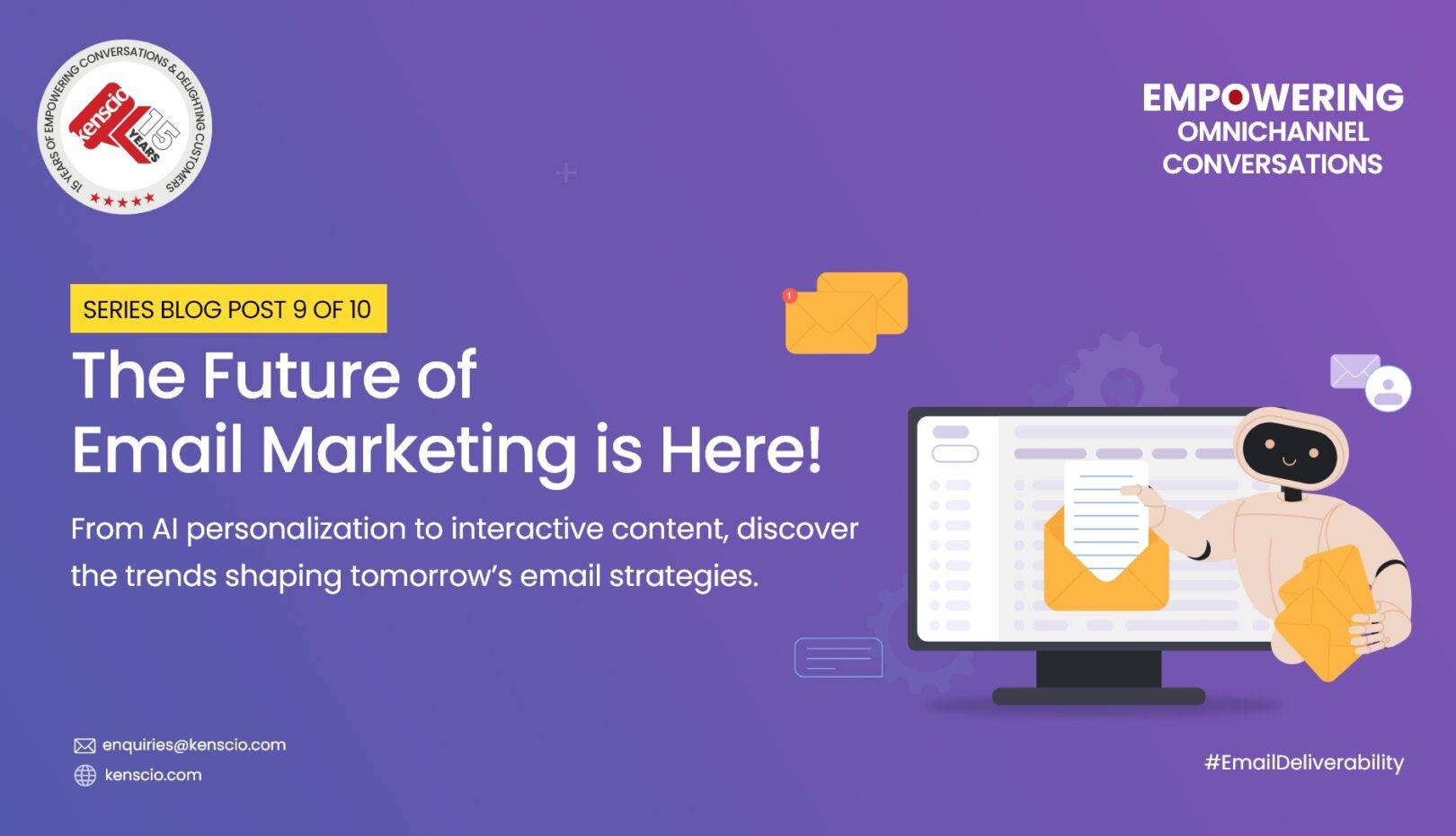- February 27, 2025
- by Hardik Vyas
Series Blog Post 9 of 10: The Future of Email: Emerging Trends and Technologies
Emerging Trends in Email Marketing
Did you know that email marketing delivers an ROI of $36 for every $1 spent, making it one of the most effective digital marketing channels? As new technologies emerge and consumer behaviors shift, staying ahead of trends is crucial for businesses to maintain their competitive edge.
This blog explores the transformative trends and technologies shaping the future of email marketing, along with actionable examples to help you adapt and succeed.
1 AI-Powered Personalization:
2 Interactive Emails:
Interactive elements such as quizzes, polls, and product carousels allow recipients to engage with content directly within the email. This creates a dynamic and engaging experience.
Example: An online retailer might include a product carousel in their email, allowing users to browse new arrivals or sales without leaving their inbox.
3 Email Automation:
Automation tools streamline the process of delivering timely and relevant emails, saving marketers time and effort. This includes tasks like triggered emails, welcome series, and abandoned cart reminders.
Example: A travel agency could automate personalized reminders for flight or hotel bookings, along with upsell options for travel insurance or activities.
4 RCS (Rich Communication Services):
RCS offers SMS-like messaging with richer media and interactive features, allowing businesses to deliver visually appealing and highly interactive messages.
Example: A food delivery app could send an RCS message with order tracking, live location updates, and clickable menu options for reordering.
5 WhatsApp Business API:
The WhatsApp Business API enables businesses to communicate with customers on a platform they already use for personal communication. It can be leveraged for customer support, marketing campaigns, and transactional messages.
Example: An e-commerce company could send WhatsApp messages to notify customers about delivery updates or personalized product recommendations.
The Impact of New Technologies
Emerging technologies are complementing email marketing by creating multi-channel communication strategies and improving user engagement.
1 Web Push Notifications:
These notifications complement email marketing by delivering timely updates to re-engage inactive users or drive immediate action.
Example: A fashion brand could send a push notification for a flash sale, leading users back to their website to shop exclusive discounts.
2 SMS Marketing:
3 Cross-Channel Integration:
Combining email, push notifications, SMS, and WhatsApp messaging allows businesses to create seamless, personalized communication.
Example: A gym could use email for monthly updates, push notifications for class reminders, and WhatsApp for member support, creating a unified customer experience.
The Future of Email Deliverability
To ensure success in the evolving landscape of email marketing, businesses must prioritize these key areas:
1 Strong Sender Reputation:
2 Email Authentication:
Implement protocols like DKIM, SPF, and DMARC to verify the authenticity of your emails and prevent spoofing.
3 Data Privacy and Compliance:
Stay updated on data privacy laws such as GDPR and CAN-SPAM, and ensure that your data collection and usage practices are transparent.
4 Continuous Testing and Optimization:
Regularly test subject lines, visuals, and CTAs to refine your strategy and boost performance.
5 Adaptability:
Embrace emerging trends and technologies to stay relevant and meet evolving customer expectations.
Conclusion
The future of email marketing is driven by innovation, and businesses that embrace emerging trends and technologies will stay ahead of the curve. Whether it’s leveraging AI for hyper-personalization, integrating interactive elements, or adopting multi-channel strategies, the opportunities are limitless. At the same time, prioritizing deliverability and compliance ensures sustainable success.
Kenscio’s Expertise:
Looking Back and Looking Ahead
Read the foundation Master Blog: Mastering Email Deliverability and Performance: A Comprehensive Guide to gain expert insights and proven strategies for enhancing email deliverability and optimizing campaign performance.
Learn from real-world case studies and discover actionable solutions with Part 8: Email Deliverability Challenges and Solutions: Case Studies, to improve their email marketing performance.
